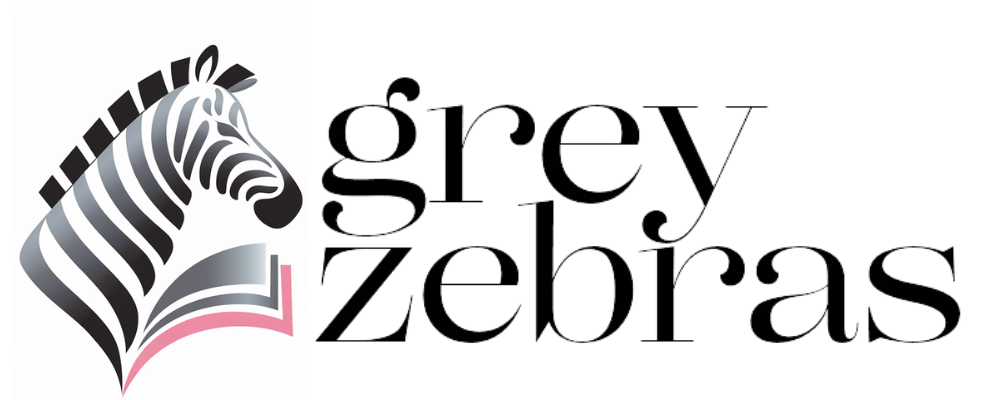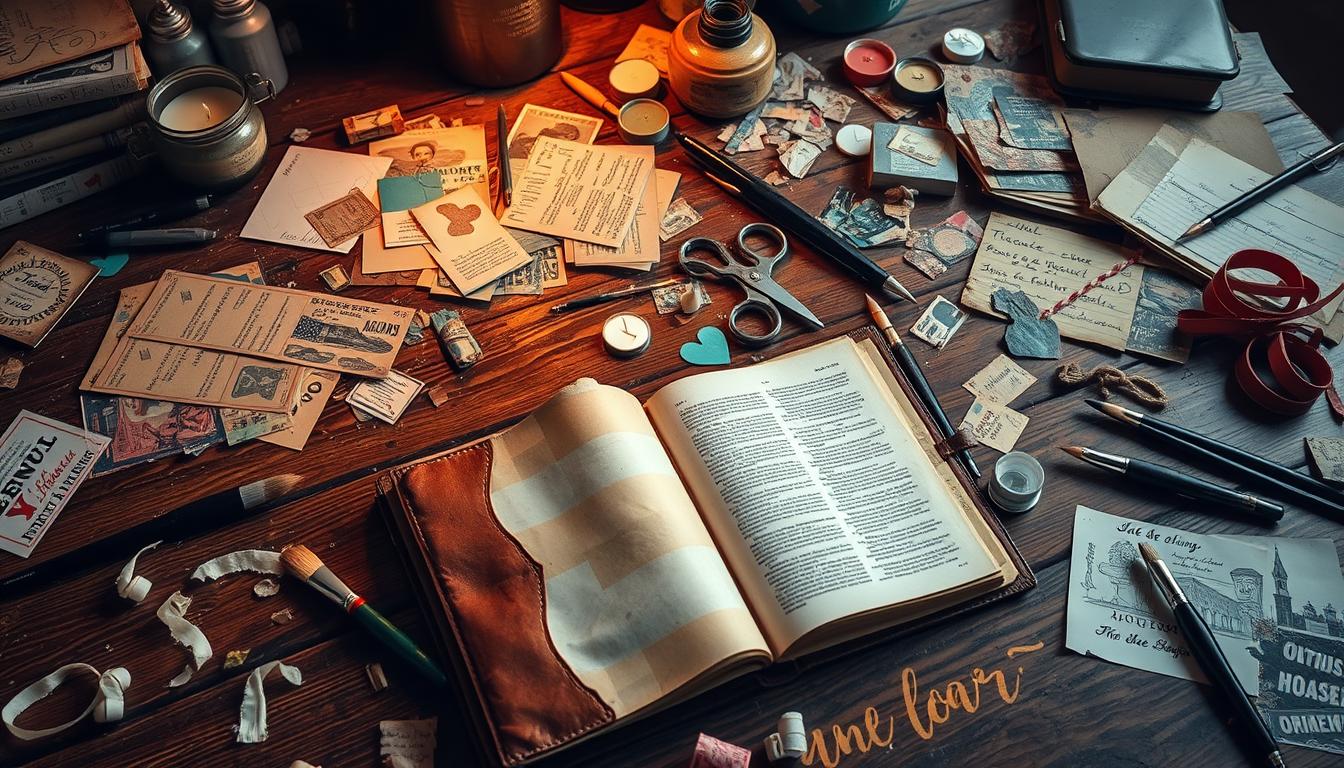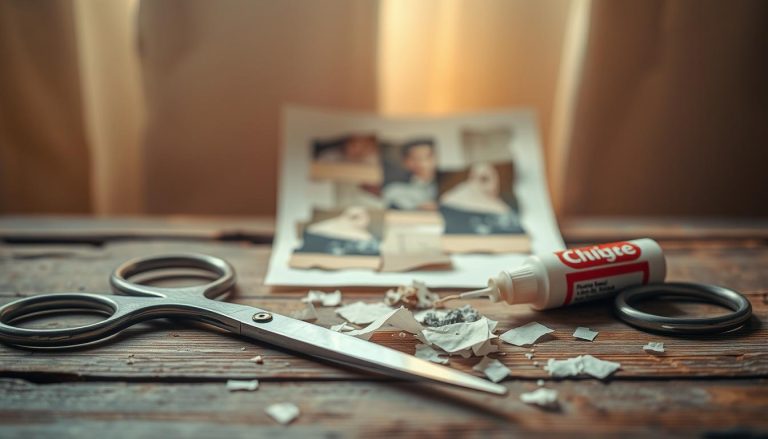Beginners Guide to Start Junk Journalling
Welcome to junk journalling, a hobby that lets you make unique journals from old stuff. As a beginner, knowing the basics is key. You’ll need the right tools and resources to start.
Junk journalling is becoming more popular, with lots of tutorials online. To begin, you must grasp the basics of making a junk journal. This guide will show you how to make your first one.
Remember to get your free mental health clipart at https://greyzebras.systeme.io/free-monthly-clipart. Also, check out our Etsy shop for all your paper needs.
Key Takeaways
- Understand the basics of junk journalling
- Learn how to create a junk journal from recycled materials
- Discover the therapeutic benefits of junk journalling
- Explore resources for getting started with junk journaling
- Find inspiration for your first junk journal project
Understanding Junk Journalling
Starting your junk journaling journey means learning its basics. It’s a creative way to make a journal with mixed media. You can focus on personal or thematic ideas.
What is Junk Journalling?
Junk journaling lets you make a journal that shows your personality or theme. You use many materials like paper, fabric, and craft supplies. It’s all about being creative and trying new things.
The Purpose of Creating a Junk Journal
Why make a junk journal? It’s different for everyone. Some use it to keep memories, while others see it as a way to express themselves. Find what sparks your creativity and use junk journaling to explore and share it. You might do it to:
- Record important moments or journeys
- Show your interests or passions through art
- Try out new materials and methods
Materials Needed for Your First Journal
To begin, gather various materials. You’ll need:
- Paper items like old postcards, newspaper, and music sheets
- Fabric or lace for texture
- Stuff like glue, scissors, and paint
- A journal base, like a blank notebook or recycled binder
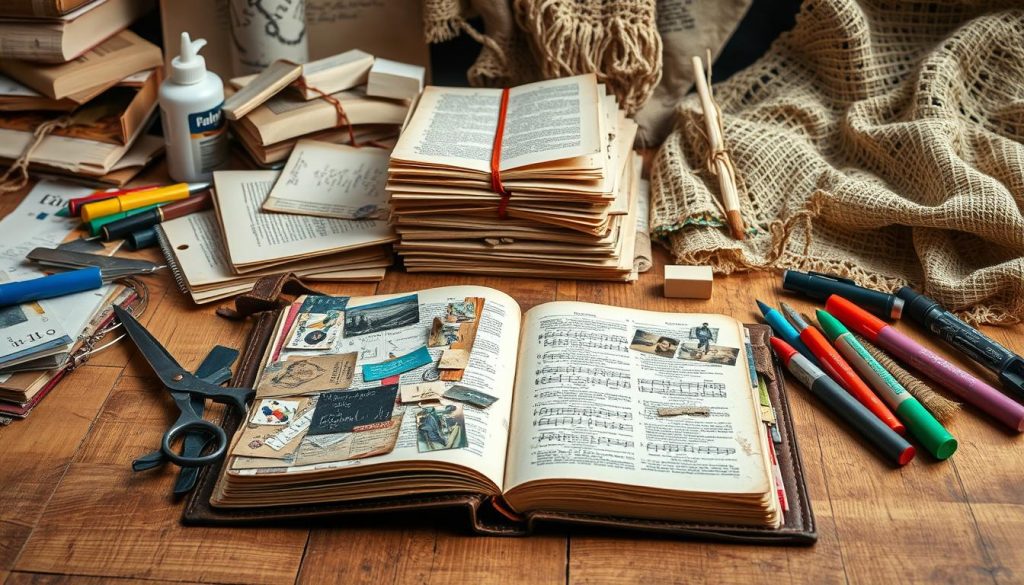
Beginners should start small and play with different materials and methods. Junk journaling is all about being flexible and exploring your creativity.
Getting Started with Your Junk Journal
Starting your junk journal journey is exciting. It begins with a few key steps. You’ll need to make some choices and get ready.
Choosing the Right Journal Base
Your journal’s foundation is the base. It could be an old book or a custom cover. Think about the size, page types, and look you want. A mix of blank, lined, and grid pages can add variety to your work.
Gathering Supplies and Ephemera
After picking your base, it’s time to collect your materials. You’ll need paper, glue, fabric, and decorations. Here are some must-haves:
- Variety of papers (coloured, textured, patterned)
- Adhesives (glue stick, tape runner, spray adhesive)
- Scissors and craft knife
- Embellishments (stickers, die-cuts, ribbons)
- Photographs and memorabilia
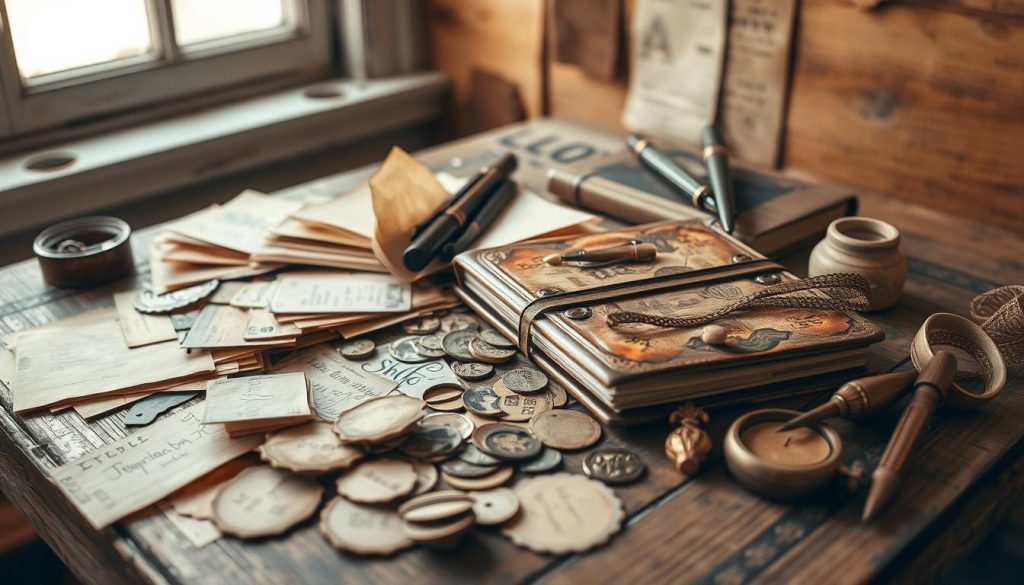
Setting Up Your Workspace
Creating a comfy and tidy workspace is vital. Keep all your supplies close and organized. A neat space boosts your creativity and makes journaling fun.
Techniques for Junk Journalling
Exploring junk journaling can really boost your creativity. It’s a flexible art that loves trying new things. By using different techniques, you can make your journals more interesting and meaningful.
Collage Methods for Creative Pages
Collage is key in junk journaling. It lets you mix different things into a beautiful page. Start by collecting papers like newspaper, magazine cutouts, and scrapbook paper. You can also add fabric or lace for extra texture.
Layering is important in collage. Start with a base layer, then add more, letting each dry before adding the next. This keeps your page from getting too wet or hard to handle. Try different glues to see what works best for you.
Adding Textures and Layers
Adding textures and layers makes your junk journals look great. Use materials like paper, fabric, or found objects. For example, you can use embossing to make your pages feel raised, or add dimensional objects like buttons or beads.
Try different layering methods to make your pages more interesting. Mix transparent and opaque materials to add depth and complexity.
Incorporating Personal Stories and Memories
Adding your own stories and memories makes your junk journal special. Use journaling cards or handwritten notes to share your experiences. You can also include photos or memorabilia that are important to you.
By adding personal stories, your journal becomes a treasured keepsake. It shows off your creativity and tells your story. This makes your journal a unique and intimate reflection of your life.
Tips for a Successful Junk Journalling Experience
Starting a junk journal can be exciting, especially for beginners. It’s important to develop habits that boost creativity and keep things organised.
Staying Organised and Inspired
Keeping your workspace tidy and your supplies organised makes junk journaling better. Look at social media or join online forums for junk journaling. They can inspire you and bring new ideas.
Joining Online Communities and Challenges
Being part of online junk journaling groups and challenges helps keep you going. You can share your work, get feedback, and learn from others. This makes your junk journaling journey richer.
Reflecting on Your Creative Journey
Thinking about your progress and the stories in your journal is important. It helps you understand your creative journey better. This reflection is key to growing as an artist and storyteller.
